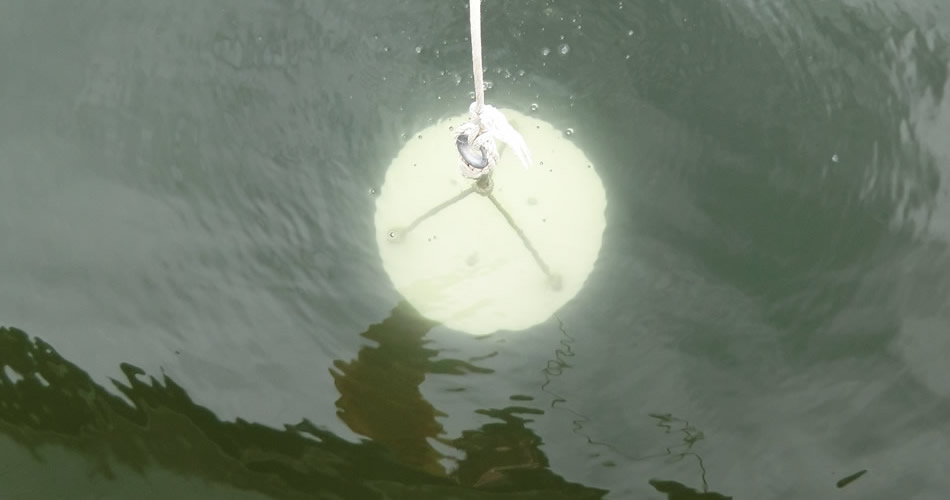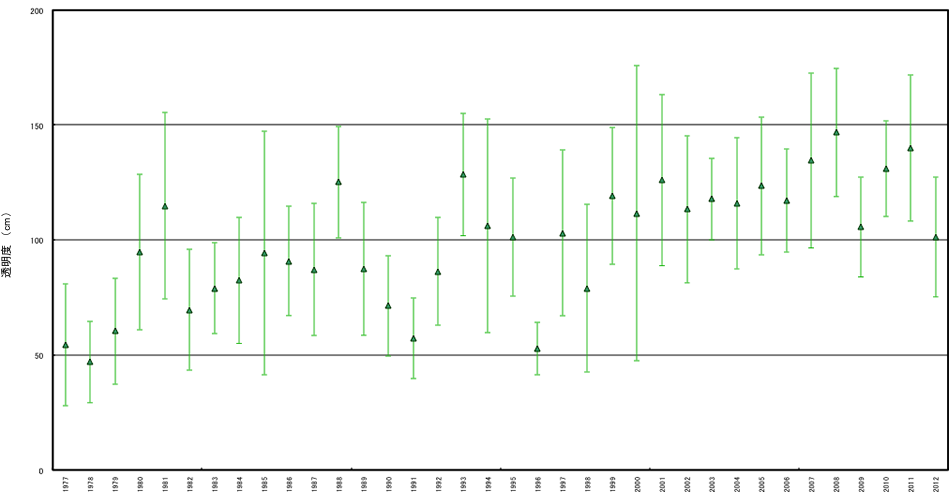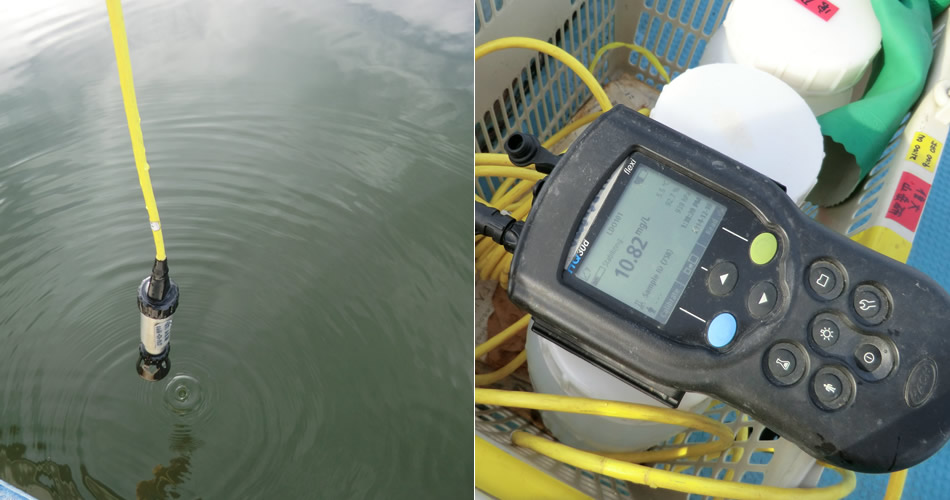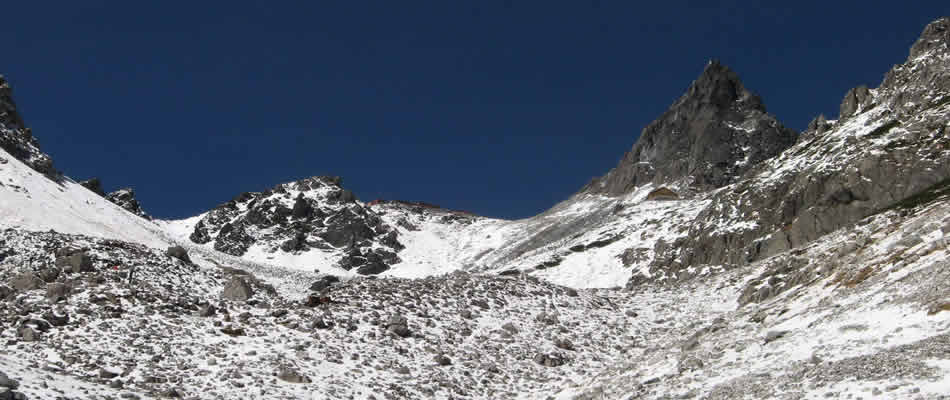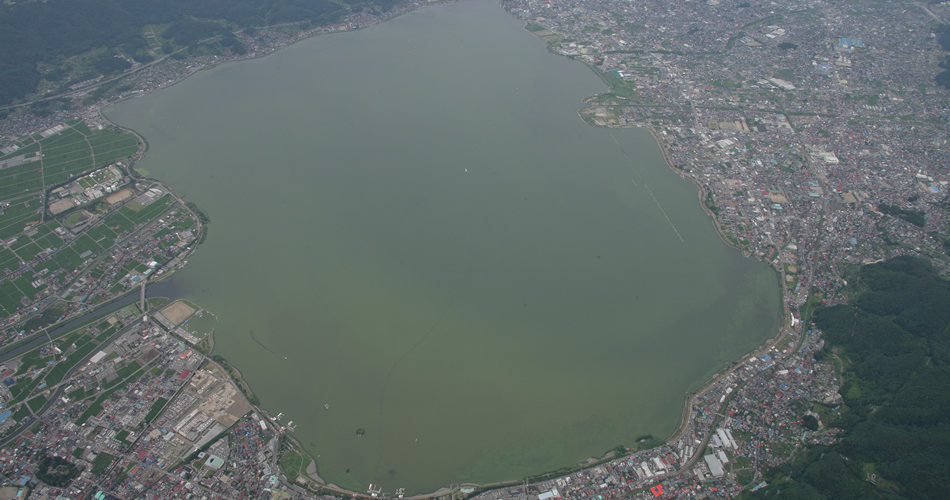
撮影:株式会社グラフィック
At Shinshu University’s Research and Education Center for Inlandwater Environment (Suwa), periodic observation of Lake Suwa continue to be carried out from the time of the former Suwa Hydrobiological Station of the Faculty of Science. At present the measurements and analysis are carried out in cooperation by the faculty members of Department of Atmospheric and Water Environment and the Department of Aquatic Ecosystem of the Institute of Mountain Science. Here we introduce you the changes in the water quality of Lake Suwa obtained from nearly 40 years of observation.What is the Periodic Observation of Lake Suwa?
We have been carrying out periodic observation at the center of Lake Suwa since 1977. Initially observation was taken once every 10 days but now they are carried out on biweekly between March and December, when the lake is not frozen. Basic observation of water quality such as water depth, transparency, water temperature, concentration of dissolved oxygen, photon density, pH, electrical conductivity, etc., are carried out, and water and biological samples are taken at each water depth. The water sampled is used for analysis of nutrient such as nitrogen and phosphorus, suspended solids and chlorophyll a concentration which is an index for phytoplankton.Achievement in Water Purification - the Improvement in Transparency of Lake Suwa in Summer
| During the period of high economic growth after the war, large quantity of nitrogen and phosphorous were discharged as domestic wastewater and wastewater from various industrial works, resulting in a rapid eutrophication in Lake Suwa. As a result, at one time during summer phytoplankton known as blue-green algal bloom emerged in large quantities, resulting in transparency that was less than 50 cm. However, since 1998 the blue-green algal bloom stopped emerging during summer and the transparency is maintained at 1 m or more (Fig. 1). Transparency is a simple and clear index of water quality obtained by immersing a white disk (secchi disk) into the water on site, and visually determining whether or not it can be seen. Its change has a close relationship to the purification of Lake Suwa. The nitrogen and phosphorous load into Lake Suwa has continued to decrease with the commencement of regional sewerage system in 1979, and this is also clear from the results of our analysis of nutrient. As you can see, Lake Suwa has been gaining attention as one of a few lakes going under purification process. | Measurement of transparency with secchi disk |
Fig. 1: Change of transparency in summer of Lake Suwa (June to August)
A new problem: Oxygen depletion of lake water
| As stated above, although improvement of water purification in Lake Suwa is progressing, in recent years a new problem has occurred. That is oxygen depletion of the lake water. Aquatic organisms use the oxygen dissolved in the water to breathe, so the decrease in oxygen concentration in the water is a problem of life and death issue for the aquatic organisms. Normally in the surface water layer phytoplankton carry out photosynthesis, so oxygen shortage does not occur. However, in the deeper water layers where the light does not reach, oxygen is consumed by respiration of aquatic organisms and by decomposition of their remains, so oxygen tends to be insufficient. During summer the concentration of dissolved oxygen in the deeper water layers is decreased and in recent years the measured level has frequently been found to be 3mg-O2/L or less, at which level the fish cannot live (Fig. 2). | Measurement of dissolved oxygen according to water depth using a dissolved oxygen meter |
Fig. 2: Change in concentration of dissolved oxygen in Lake Suwa (at water depth 5.5 m)
Water depth at the center of Lake Suwa is about 6 m.


